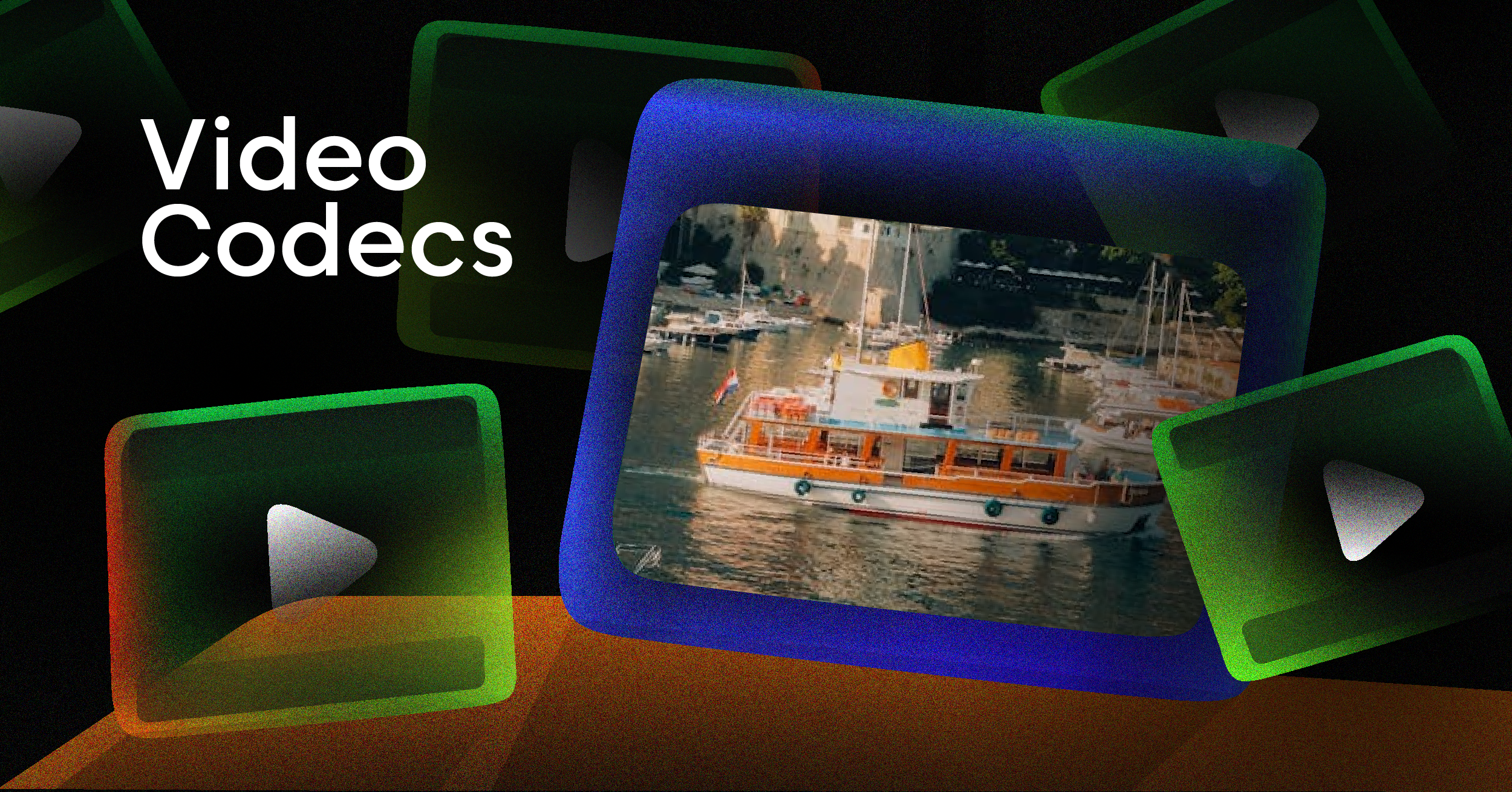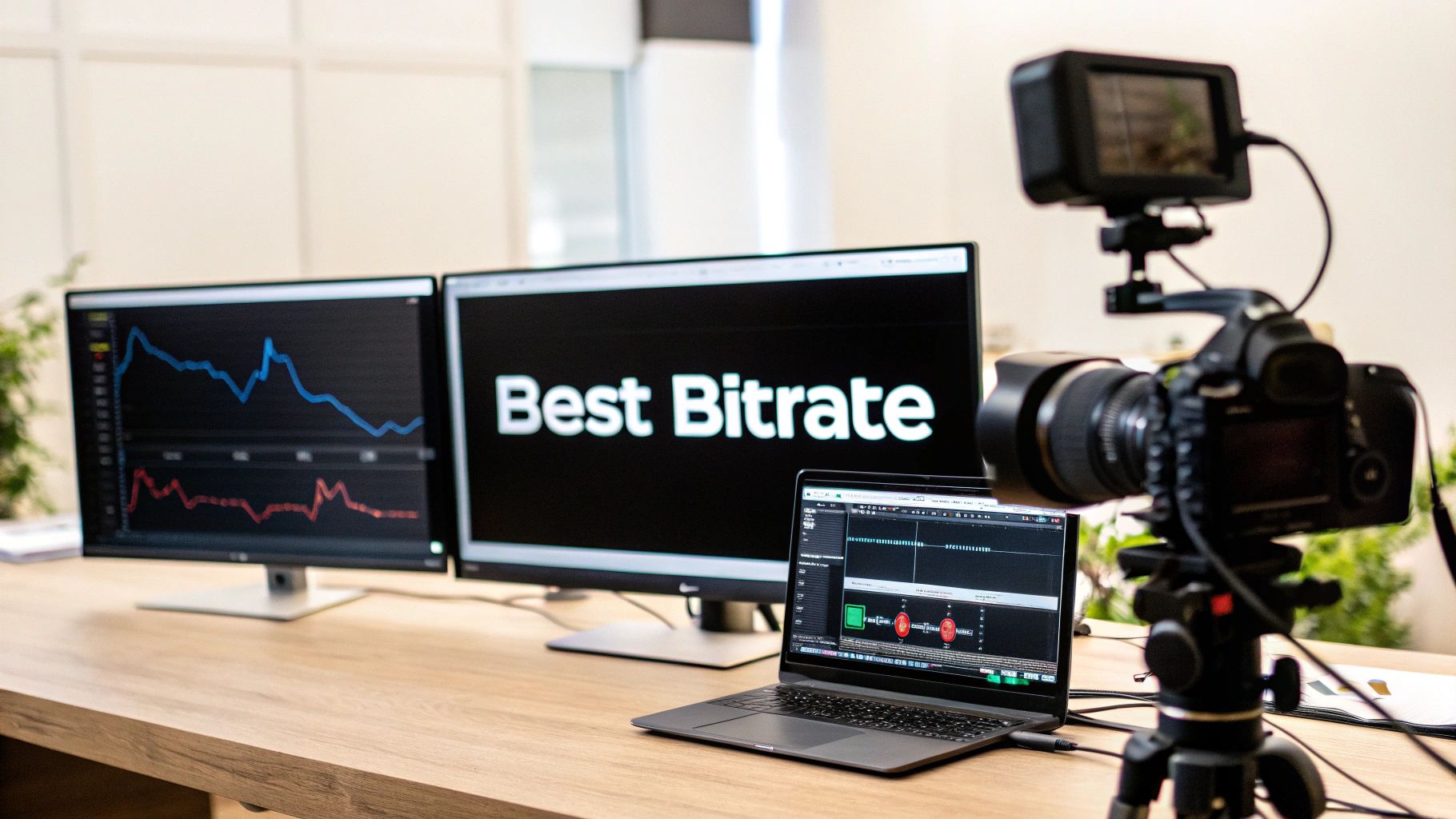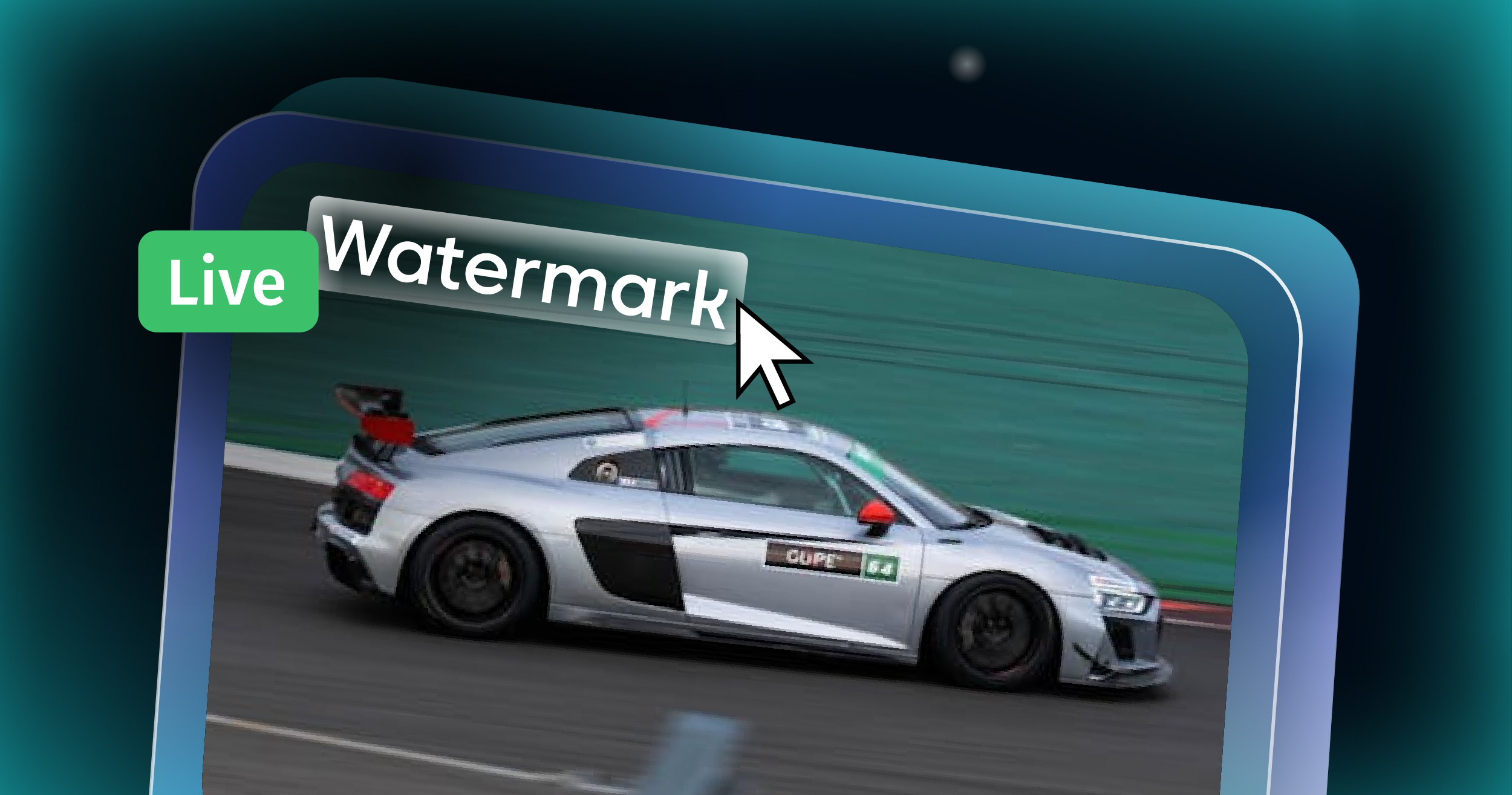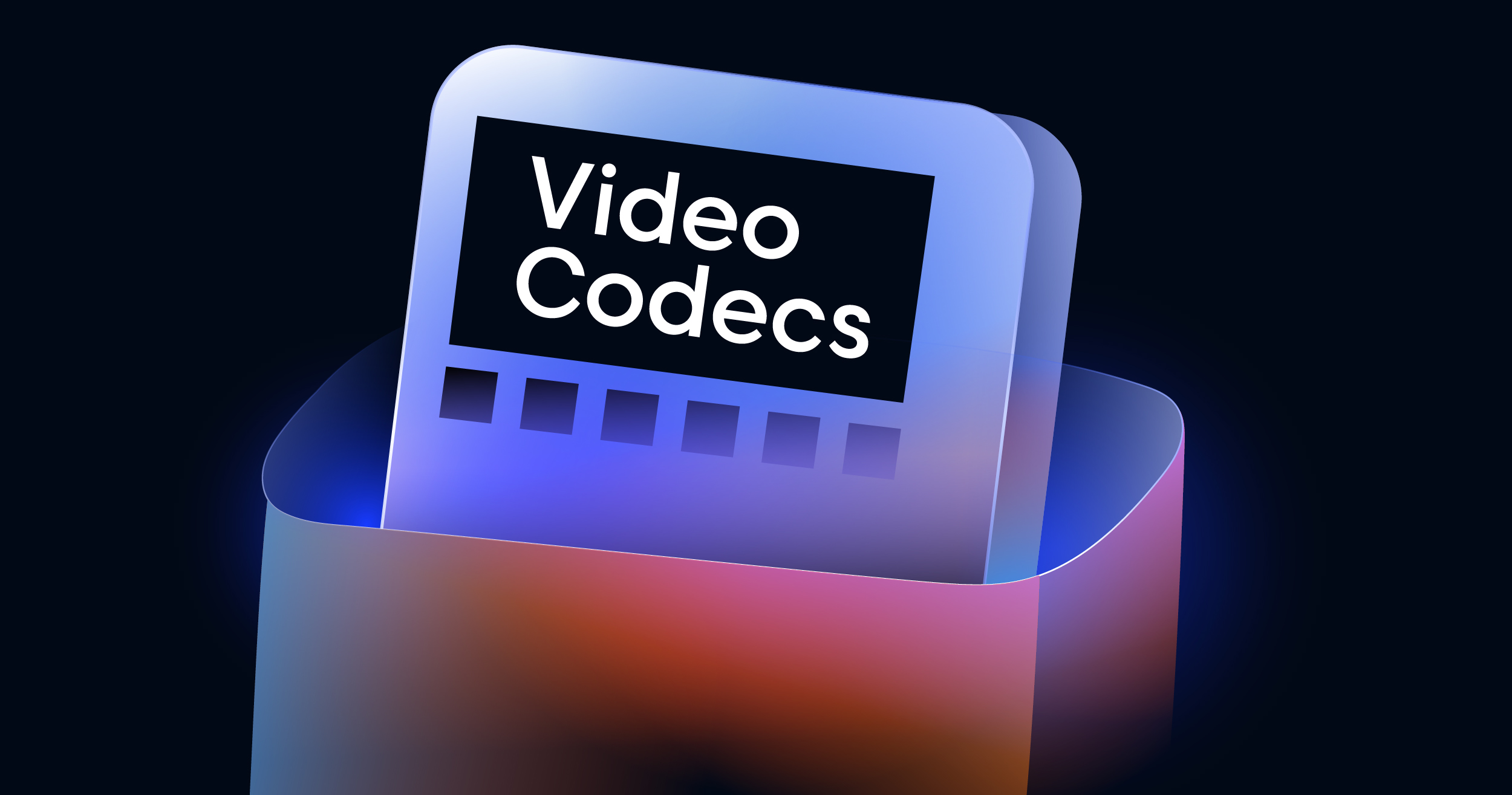At its most basic level, a video codec is the software or hardware that does one simple thing: it compresses and decompresses video files. The name itself is a portmanteau of ‘coder-decoder,’ which perfectly sums up its dual role. It codes (compresses) raw, bulky video data into a much smaller package for storage or streaming, and then decodes it for playback on a screen.
The Secret Engine Behind Your Video Streams

Think of it like a sophisticated space-saver for digital information. Imagine trying to ship a massive, fragile sculpture. You wouldn’t just put it on a truck; you’d carefully disassemble it, pack the pieces tightly into a smaller, reinforced box, and include instructions for reassembly. A codec does exactly that for video, making it small enough to fly across the internet or fit on your phone.
This process, though invisible to most of us, is the foundation of modern media. Without codecs, watching a movie on Netflix, hopping on a Zoom call, or even scrolling through YouTube would be a frustrating, buffer-filled nightmare. High-definition video would be too massive to handle.
In short, codecs are what make video practical. They tackle the core problem of video’s enormous file size by using smart algorithms to toss out redundant data—the kind of visual information our eyes won’t notice is missing anyway.
To give you a sense of their impact, let’s look at a true giant in the field: H.264 (also known as AVC). Finalized way back in 2003, it revolutionized video by achieving a 50% bit rate reduction over previous standards. This leap in efficiency is what paved the way for HDTV and the streaming boom. Even today, H.264 is a workhorse, powering over 90% of all video streams across the globe, as highlighted in market reports about video codecs.
A codec’s job is a constant balancing act between three critical factors: video quality, file size (bitrate), and the computational muscle needed to encode and decode it. The “best” codec is simply the one that strikes the right balance for a specific job.
To help break this down, the table below outlines the core jobs every video codec performs.
Core Functions of a Video Codec at a Glance
| Function | What It Does | Why It Matters |
|---|---|---|
| Encoding | Analyzes raw video frames and uses algorithms to create a compressed version. | This is what shrinks massive video files, making them small enough to store, send, and stream efficiently. |
| Decoding | Reconstructs the compressed data back into viewable video frames on a device. | This ensures you can actually watch the video, turning the compressed file back into the movie or stream you see on screen. |
| Compression | Removes spatial (within a frame) and temporal (between frames) redundant data. | This is the “magic” that reduces file size without a noticeable drop in quality, enabling HD streaming over standard internet. |
| Decompression | Reassembles the video frames according to the codec’s rules for smooth playback. | This process has to be fast and efficient to avoid stuttering, buffering, or other playback artifacts. |
This constant negotiation between quality, size, and performance is precisely why so many different codecs exist. Some are built for the highest possible fidelity needed in professional filmmaking, while others are designed for extreme compression to keep a live stream stable, even on a weak mobile connection. Getting a handle on how they work is the first real step toward mastering video delivery.
How Do Codecs Make Video Files So Much Smaller?
Ever wonder how a massive 4K video, which should be gigabytes in size, can stream almost instantly to your phone? It’s not magic. It’s the result of some seriously clever compression techniques that video codecs use to make huge files manageable enough for the internet.
This whole process boils down to two core philosophies for shrinking data.
Lossless vs. Lossy Compression
First up is lossless compression. The best way to think about this is like a ZIP file. When you zip a folder of documents, you’re not deleting any words or pages. The software just finds a more efficient way to store the data. When you unzip it, everything comes back exactly as it was, with zero data loss.
Then there’s the method that makes nearly all online video possible: lossy compression. This approach is a bit more like making a detailed summary of a book. You’ll get the entire plot, all the main characters, and the ending, but some of the less critical descriptive sentences might get trimmed out to save space. You still get the full story, but a tiny bit of the original text is gone for good.
Lossy compression is the engine of modern streaming. Codecs are smart enough to throw away visual and audio data that our eyes and ears probably wouldn’t have noticed anyway. This is how they achieve incredible file size reductions while keeping the video looking great.
The Smart Tricks Behind Compression
To pull this off, codecs use a couple of sophisticated techniques that hunt down and eliminate redundant information. The two big ones are intra-frame and inter-frame compression.
Intra-frame Compression
This technique works on just a single frame of video at a time, kind of like how a JPEG image gets compressed. The codec scans the image for big, uniform areas. If it sees a clear blue sky, it doesn’t waste time storing the data for every single blue pixel. Instead, it essentially says, “this entire section is this exact shade of blue.” It gets rid of redundant information within one picture.
Inter-frame Compression
This is where the most dramatic file size savings come from. Inter-frame compression is all about spotting what’s the same between different frames.
Imagine a video of someone talking in front of a bookshelf. Does the bookshelf change from one frame to the next? Nope. The codec is smart enough to realize this. It records the background once and then, for the next several seconds, only worries about encoding the parts that are actually moving—like the person’s mouth and eyes.
This intelligent guesswork and motion tracking are what make codecs like the ones found in the H.264 file type so incredibly efficient. By only recording the differences from one frame to the next, they can slash a video’s file size by up to 90% or more. Without it, streaming as we know it simply wouldn’t exist.
A Practical Comparison of Today’s Most Common Video Codecs
Picking the right video codec is a lot like choosing a car. You wouldn’t take a two-seater sports car on a family camping trip, right? Each vehicle is built for a purpose. The same goes for codecs—they’re each engineered with a unique balance of performance, efficiency, and compatibility.
Let’s pop the hood on the four heavyweights in the video world: H.264, H.265, VP9, and AV1. We’ll skip the dense engineering specs and focus on what really matters for your streams.
H.264 (AVC): The Universal Standard
Think of H.264, or Advanced Video Coding (AVC), as the trusty old minivan. It’s not the latest model, and it doesn’t have all the new bells and whistles, but it’s been getting the job done reliably for years. It just works, everywhere.
Since its debut way back in 2003, H.264 has become the de facto standard. From ancient smartphones to brand-new smart TVs, you can be confident it will play. This universal support makes it the safest bet for live streaming, ensuring you can reach the widest possible audience without a single compatibility headache.
H.265 (HEVC): The High-Efficiency Successor
Next up is H.265, also known as High Efficiency Video Coding (HEVC). This is the modern, fuel-efficient SUV of the codec world. It delivers a serious upgrade over H.264, providing the same visual quality at roughly half the bitrate.
That efficiency is a game-changer for 4K and HDR streaming, as it drastically cuts down on the bandwidth needed to deliver stunning, high-resolution video. But there’s a catch. H.265 is wrapped up in complex and often expensive licensing fees, which has definitely put the brakes on its universal adoption. If you want to dig deeper, our guide on the HEVC video format has all the details.
The image below gives you a great visual on how much these codecs can shrink a video file, starting from the massive, uncompressed original.

As you can see, lossy compression is the magic that makes streaming possible, intelligently tossing out data our eyes would never notice anyway.
VP9 and AV1: The Royalty-Free Innovators
The licensing headaches of H.265 really lit a fire under the open-source community, leading to some incredible royalty-free alternatives. Google’s VP9 was the first major contender, offering compression efficiency on par with H.265. It quickly gained support in Android, Chrome, and Firefox and became the engine behind YouTube’s 4K video library.
Taking things a step further is AV1 (AOMedia Video 1). Developed by a powerhouse consortium including Amazon, Apple, Google, and Netflix, AV1 is the sleek, next-generation electric vehicle of codecs. It squeezes files even further, improving compression by another 30% over H.265. This makes 4K and even 8K streaming a practical reality for more people.
While AV1 does require more computational muscle to encode, its superior performance and royalty-free model have the industry’s biggest players racing to adopt it.
To help you see how these four stack up side-by-side, we’ve put together a quick comparison table.
H.264 vs H.265 vs VP9 vs AV1 A Feature Comparison
| Feature | H.264 (AVC) | H.265 (HEVC) | VP9 | AV1 |
|---|---|---|---|---|
| Compression Efficiency | Good | Excellent (50% better than H.264) | Excellent (Similar to H.265) | Superior (30% better than H.265) |
| Compatibility | Universal | Widespread, but not universal | Strong on web/mobile | Growing fast, not yet universal |
| Licensing | Royalty-free | Complex and costly | Royalty-free | Royalty-free |
| Primary Use Case | Live streaming, web video | 4K/UHD streaming, broadcast | YouTube, web streaming | Premium on-demand streaming (Netflix) |
| Encoding Demands | Low | Moderate to High | Moderate | Very High |
This table makes it clear that while H.264 is still the king of compatibility, the future is all about efficiency. Codecs like AV1 are paving the way for higher-quality video over standard internet connections.
The Future of Video Compression Technology
Our global appetite for higher-quality video seems to have no limit, and it’s constantly straining the digital infrastructure we rely on. This hunger for more pixels and smoother frame rates fuels a never-ending race to develop smarter, more efficient compression. On the horizon, the next generation of video codecs is getting ready to completely change the game, solving problems that today’s standards just can’t handle on their own.

Newcomers like VVC (Versatile Video Coding)—you might also see it called H.266—are leading the charge, along with the continued evolution of AV1. These aren’t just minor tweaks to old technology. They represent a fundamental rethinking of compression, designed from the ground up to make experiences like 8K video, 360-degree virtual reality, and cloud gaming a practical reality for everyone.
Why We Need Even Better Codecs
At its core, the problem is straightforward: as video quality goes through the roof, file sizes follow suit. Without a major leap forward in compression, the bandwidth needed to stream these next-gen experiences would be astronomical. We’d be stuck with endless buffering, high data bills, and a frustrating experience for anyone not on a top-tier internet connection.
This is exactly where the next generation of codecs comes in:
- Making 8K a Reality: VVC is on track to deliver the same visual quality as H.265 (HEVC) but using up to 40% less data. That kind of efficiency is what will finally make streaming ultra-high-definition content possible without bringing networks to their knees.
- Powering Immersive Media: Things like VR and AR need incredibly high resolutions and frame rates to feel convincing. Advanced codecs are the key to making it feasible to send that massive amount of data over a standard internet connection.
- Slashing Operational Costs: For huge platforms like Netflix or YouTube, bandwidth is a massive line item in their budget. Better compression means direct and significant cost savings, which frees up money to invest back into content and new features.
The push for new video codecs isn’t just a purely technical pursuit. It’s a direct response to what’s happening in the world—the explosion of user-generated content, the global rollout of 5G, and the simple fact that people want richer, more engaging media.
The market is already signaling its approval. The next-gen video codec market is expected to grow at an annual CAGR of almost 29% between 2025 and 2031, hitting a projected value of USD 12.1 billion. You can find more insights about this growing market and what’s driving it.
The Trade-Offs of Next-Generation Technology
Of course, these breakthroughs don’t come for free. The incredibly complex algorithms that make all this amazing compression possible require a whole lot more processing power—both for encoding on the server-side and decoding on your device.
This creates a classic trade-off. While a new codec can dramatically cut bandwidth needs, it demands more powerful hardware to run smoothly. Initially, this means adoption is often limited to the newest, most capable devices. The path from a newly approved standard to widespread, hardware-accelerated support across billions of phones, laptops, and smart TVs is a journey that takes years, not months.
Ultimately, the future of video compression is a constant cycle of innovation. As our creative ambitions expand, so does the brilliant technology that makes it possible to share those visions with the world. The work being done on codecs like VVC is what ensures our digital infrastructure can keep up with our imagination.
So, How Do You Pick the Right Video Codec?
Choosing the perfect video codec isn’t about finding a single “best” one. It’s more of a strategic balancing act. You’re trying to find the sweet spot between video quality, how many people can actually watch your content, and what it’s all going to cost. The right choice makes sure your video looks fantastic and plays smoothly for your specific audience.
This whole decision really boils down to a few key questions about what you’re trying to accomplish.
First and foremost, think about your audience and their devices. Who are you trying to reach? If your goal is to hit as many eyeballs as possible—say, a corporate training video that needs to run on ancient office desktops—then H.264 is the undisputed champion. Its universal support means it will play on just about anything, making it the safest bet for wide distribution.
What Level of Quality Do You Need?
Next, you have to get honest about your quality requirements. Are you streaming a standard HD webinar, or are you pushing out a premium 4K cinematic experience? For anything high-resolution, like 4K or 8K video, efficiency is the name of the game.
This is where newer codecs like H.265 (HEVC) and AV1 really shine. They were designed to deliver that stunning visual quality using a fraction of the bandwidth H.264 would need. That translates directly into saving a ton of money on storage and delivery.
But that efficiency doesn’t come for free.
- Licensing Headaches: H.265 can get tangled up in some complex and expensive licensing deals, which might be a non-starter for smaller outfits.
- Encoding Muscle: AV1 is royalty-free (which is great!), but it’s a beast to encode. It demands serious processing power, which can drive up your server costs and slow down your workflow.
- Device Compatibility: While support is growing fast, neither H.265 nor AV1 has the same “it just works” reach that H.264 has enjoyed for years.
I like to think of it like packing for a trip. H.264 is your trusty, all-purpose suitcase; it works for pretty much any destination. H.265 and AV1 are more like specialized hiking backpacks—super light and efficient, but really only suited for specific, modern adventures.
Ultimately, your choice hinges on your priorities. If you’re building a streaming platform to serve up 4K movies to people with the latest smart TVs and fast internet, the bandwidth savings from AV1 or H.265 are a massive win.
But if you’re a startup creating how-to videos for a global audience using a mix of old and new devices, the simple reliability and reach of H.264 is still the smartest move. By weighing these factors—compatibility, quality, and cost—you can land on the right codec to make your project a success.
Why Codecs Are the Unsung Heroes of Streaming

As we’ve seen, from basic compression to the complex dance of a live stream, video codecs are far more than a technical detail. They are the fundamental building blocks of our modern, video-driven world.
Think about it. Every time you binge a series, hop on a video conference, or catch a live game on your phone, a codec is the silent partner making it all happen. They are the invisible engines that completely reshaped how we experience media, paving the way for everything from on-demand movies to real-time global communication.
By cleverly shrinking gigantic video files without destroying the quality, codecs put high-definition content within reach for billions of people every single day.
Codecs are the essential bridge between massive raw video data and the smooth, instant playback we now expect. They manage the constant trade-off between quality and file size, making modern digital communication possible.
Often, getting that video to everyone’s screen requires a few more steps. After the first encoding pass, a stream might need to be adapted for different devices and network speeds. If you want to dive deeper into that part of the process, our guide on what is video transcoding breaks it all down.
Ultimately, understanding codecs is about giving credit where it’s due. They truly are the unsung heroes that keep our digital world turning.
Common Questions About Video Codecs
If you’re starting to work with video, you’ve probably got a few questions. Let’s tackle some of the most common ones that come up when people are trying to wrap their heads around codecs and how they fit into the real world.
What’s the Difference Between a Codec and a Container?
This is a classic. People often mix up codecs and containers, but the distinction is pretty simple when you think about it.
Imagine a container format like MP4, MOV, or MKV as a shipping box. It’s just a package designed to hold everything together: the video, the audio, maybe some subtitles. It’s the wrapper.
The codec, on the other hand, is how you pack the video inside that box. You could have two identical-looking MP4 boxes, but one might have its video packed (compressed) with the old-school H.264 codec, while the other uses the super-efficient AV1. The box is the same, but what’s inside—and how it’s packed—is totally different.
Is There One “Best” Codec for Everything?
In a word: no. There’s no magic bullet codec that’s perfect for every single job. Choosing the right one always comes down to a series of trade-offs, and your decision really hinges on what you’re trying to accomplish.
- Need it to play everywhere? Go with H.264. It’s the old reliable. You can be confident it will work on just about any device you can think of.
- Streaming in 4K? H.265 (HEVC) is your workhorse. It offers fantastic compression for high-resolution video, but just be aware of the licensing fees that often come with it.
- Building for the modern web? AV1 is a brilliant, royalty-free choice that offers top-tier efficiency. It’s what giants like YouTube use, but it does require more muscle to encode and decode.
The “best” codec is simply the one that hits the sweet spot between video quality, compatibility, cost, and performance for your specific needs.
Why Does My Streaming Video Sometimes Look Pixelated?
We’ve all been there. You’re watching a video, and suddenly it turns into a blocky, pixelated mess. This is actually a codec doing its job to adapt to your internet connection.
Streaming platforms don’t just have one version of a video. They encode it into multiple versions at different quality levels, or bitrates. When your internet slows down, the player smartly switches to a stream with a lower bitrate. That lower-bitrate version has been compressed much more aggressively by the codec, so it uses less data and keeps playing without buffering.
The downside? That heavy compression means a lot of visual detail gets thrown out, which is what causes that pixelated look. It’s a direct trade-off: lower quality for a smoother playback experience.
At LiveAPI, we give developers a powerful API that handles all the heavy lifting of video encoding and delivery. We support multiple codecs so your streams look fantastic, no matter the device. Learn more about our streaming solutions at LiveAPI.










